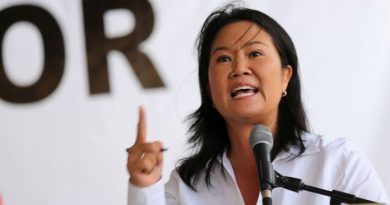Jeanine Añez’s Rule Was Catastrophic for Women Workers
The gender gap widened and women workers were hit significantly harder than men during the year long coup administration of Jeanine Añez.
During 2020, unemployment rose sharply for both men and women, but increased faster for women and took far longer to fall back, while underemployment saw an even more dramatic rise, affecting women to a much higher degree than men.
A new report by the Center for Economic and Policy Research (CEPR) looks at the economy of Bolivia during the year in which it was ruled by then Senator Añez following the November 2019 United States-backed military coup. CEPR’s findings show that the regime instituted regressive economic policies and mishandled the response to Covid-19 and related recession “in ways that indicated it was undertaking an economic policy agenda, along with its political agenda, that was very different from the prior government.”
From the outset, Añez and spokespersons of the regime explained to the country that her rule would be temporary, calling it a gobierno transitorio, while referring to Añez as the presidente interina and other such combinations to indicate that the coup administration was acting as a provisional or interim government until new elections could be held, despite that President Evo Morales triumphed in a clear first round victory in the October general election.
As we, Kawsachun News, have reported since the start of the coup, the leaders of coup had always intended to massively overhaul the MAS government’s socialist economic policies, gut the Bolivian state, privatize national industry, sell off state resources and impose a neoliberal model by force. The regime’s immediate attack on Bolivia’s state companies and industries, a central feature of Bolivia’s socialist economic model under the MAS, was not included in CEPR’s report and will be important to analyze.
The findings in CEPR’s analysis, published seven months after Bolivia’s democracy was restored, conform with what the Movement Towards Socialism (MAS) and its social movements, unions and elected leaders had told us all along: After seizing power by through violence, the illegitimate de facto administration moved to hastily force a starkly different set of economic policies than those which had been implemented by the government of Evo Morales.
As Evo has many times reiterated, the coup dictatorship not only sought to obliterate the undeniably successful model of the previous 14 years in order to install the neoliberal model: Coup actors came together to plunder the Bolivian state for their own personal gain.
CEPR’s report shows that damage to the Bolivian economy can be seen as early as the fourth quarter of 2019 when Añez took power, months before Covid-19 appeared in South America.
“In the fourth quarter of 2019 (when the coup occurred), public sector expenditure fell sharply, shrinking by 7 percent of quarterly GDP from the prior period. Although some of this drop was recovered in the first quarter of 2020 (3 percentage points), the cuts damaged the economy in advance of the pandemic and recession. The de facto government also failed to increase the nominal value of the minimum wage for the first time since 2006, and sharply reduced public sector wages. These were more indications of its goals of changing the policies of the prior, elected government.”
The report’s Labor Market Developments section was only able to account for employment, unemployment and underemployment figures from Bolivia’s urban areas, which is noted as 70% of the population, since figures for rural areas were unavailable after March 2020.
Bolivian workers lived through extremely difficult times, experiencing hunger and other hardship as a result of the national lockdown which left the country’s informal employment sector workers completely without income. Unemployment and underemployment peaked for both men and women workers in July, however women workers saw no improvement in August as men returned to work, despite the lifting of the national lockdown in June.
“As with unemployment, women were hit significantly harder than men in the labor market during this downturn. The underemployment rate rose around 10 percentage points over 2020 for women, and 7 percentage points for men. Women who are employed are more likely to be underemployed than men, and the gap between the genders has widened.”
Meanwhile, salaries fell for both the public and private sectors over 2020, beginning pre-Covid, and for the first time in 14 years, there was no annual increase to the minimum wage.
By Camila Escalante



